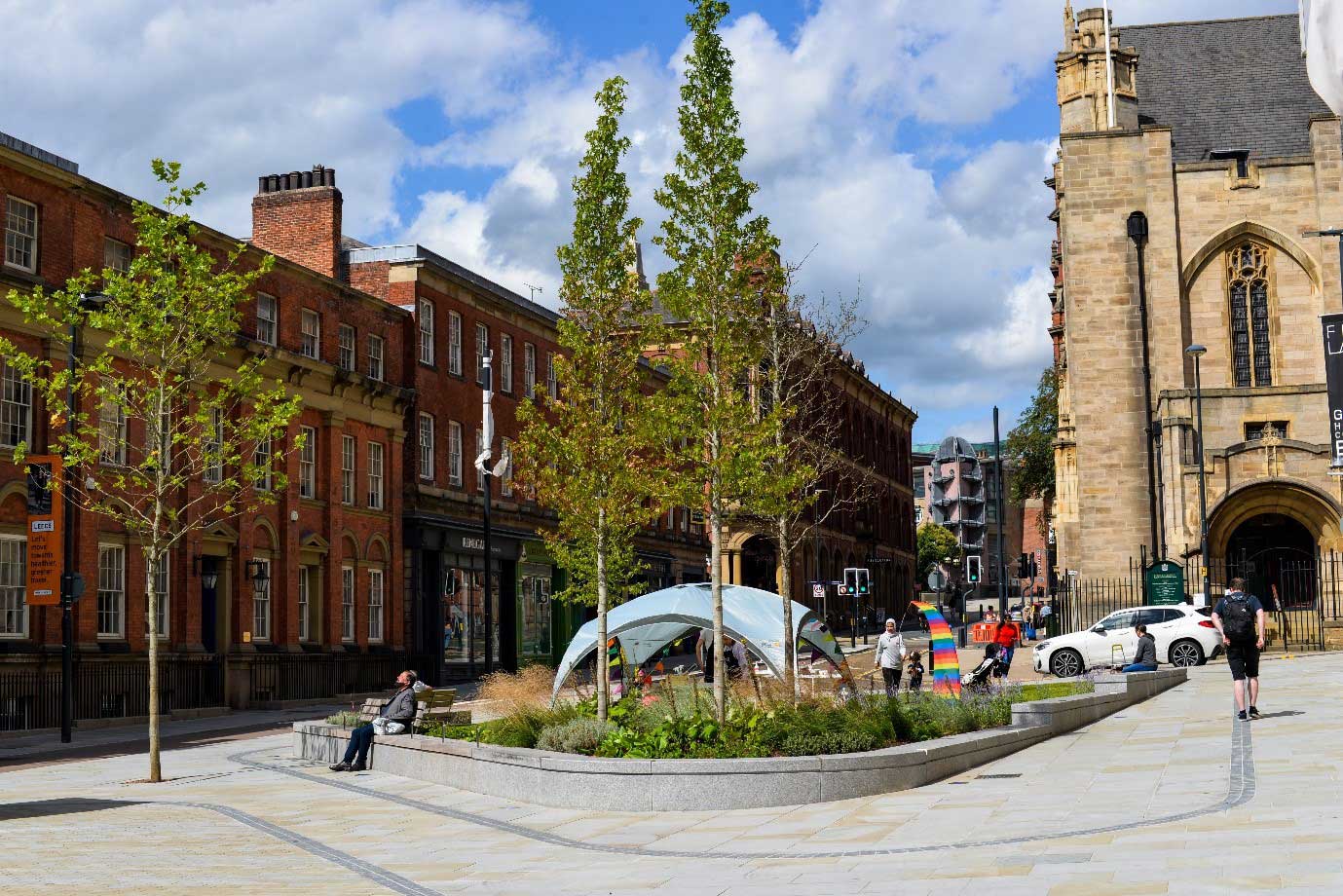The Leeds Public Transport Infrastructure Programme (LPTIP) saw collaboration across our Landscape Architecture, Ecology and Heritage teams in working to make Leeds city centre greener and more pedestrian and cycle friendly.
- Client Capita Services
- Location Leeds
- Services
Promoting sustainability through the design of pedestrianised city centre streets and public spaces
Leeds Public Transport Investment Programme (LPTIP) is a multi-year programme that aims to dramatically improve public transport and active travel across Leeds by addressing issues in key hotspots across the city.
As part of the inner-city gateways phase of the project, which focusses on key arterial routes within the city centre, we provided a wide range of services, encompassing expertise from across our Environment and Sustainability team. This allowed us to oversee the urban design elements of the project and also explore how the newly pedestrianised areas could be used to promote sustainable travel around the city.
To achieve this our designs included the creation of pedestrianised streets, public spaces and cycling routes and also an extensive urban tree planting scheme, supported by Sustainable Drainage Systems to boost the city’s green infrastructure network.
The design requirement of planting sizeable specimen trees in predetermined, highly urbanised locations did however pose significant challenges. To address the lack of soil volume and difficulty of planting in highly compacted ground, soil cells were installed beneath the pavement surface, to prevent soil compaction and allow tree roots to spread more easily. As a result we were able to increase the number of trees in Leeds city centre and plant tree species with a greater tolerance to the changing climate, improving the overall resilience of the project significantly.

As well as helping to support Leeds in becoming a greener, more pedestrian friendly city, this project also contributes to reducing the impact of urban heat island effect, which can increase energy costs, air pollution levels and heat related illness.





